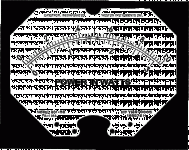"We approach a watt sometimes but mostly average .2 watts and an occasional peak up around a watt. Beautiful sounding amp!"
Dumb question - but that's how I learn. How do you safely measure an amplifiers output?
Is it just a case of sticking a multimeter on the speaker terminals whilst playing music or do you use a dummy load?
What can you measure and how with a multimeter? Have educational USB type ocilloscope too but only rated for 5volts
Dumb question - but that's how I learn. How do you safely measure an amplifiers output?
Is it just a case of sticking a multimeter on the speaker terminals whilst playing music or do you use a dummy load?
What can you measure and how with a multimeter? Have educational USB type ocilloscope too but only rated for 5volts
use an 8 ohm dummy load, then a 1khz signal source with variable output, then a scope to monitor the sine wave, then increase the input signal until the onset of clipping, back down till the sine wave peaks are well rounded, measure the voltage at this point.....
so P=Vac^2/8 ohms
so P=Vac^2/8 ohms
use an 8 ohm dummy load, then a 1khz signal source with variable output, then a scope to monitor the sine wave, then increase the input signal until the onset of clipping, back down till the sine wave peaks are well rounded, measure the voltage at this point.....
so P=Vac^2/8 ohms
So would one of these cheap and cheerful signal generators do the job?
Frequency Generator Kit - FG085 - KIT-11394 - SparkFun Electronics
plus a 8ohm dummy load
Wow this is a monster thread!!
I think my last post was some where in the 300s. My last visit was Dec 10, 2018. 1 year later my ACA v1.6 balanced monoblocks are still doing well.
I think my last post was some where in the 300s. My last visit was Dec 10, 2018. 1 year later my ACA v1.6 balanced monoblocks are still doing well.
Thanks, good idea. I did as you suggested. Build is complete. Both are now breaking in.
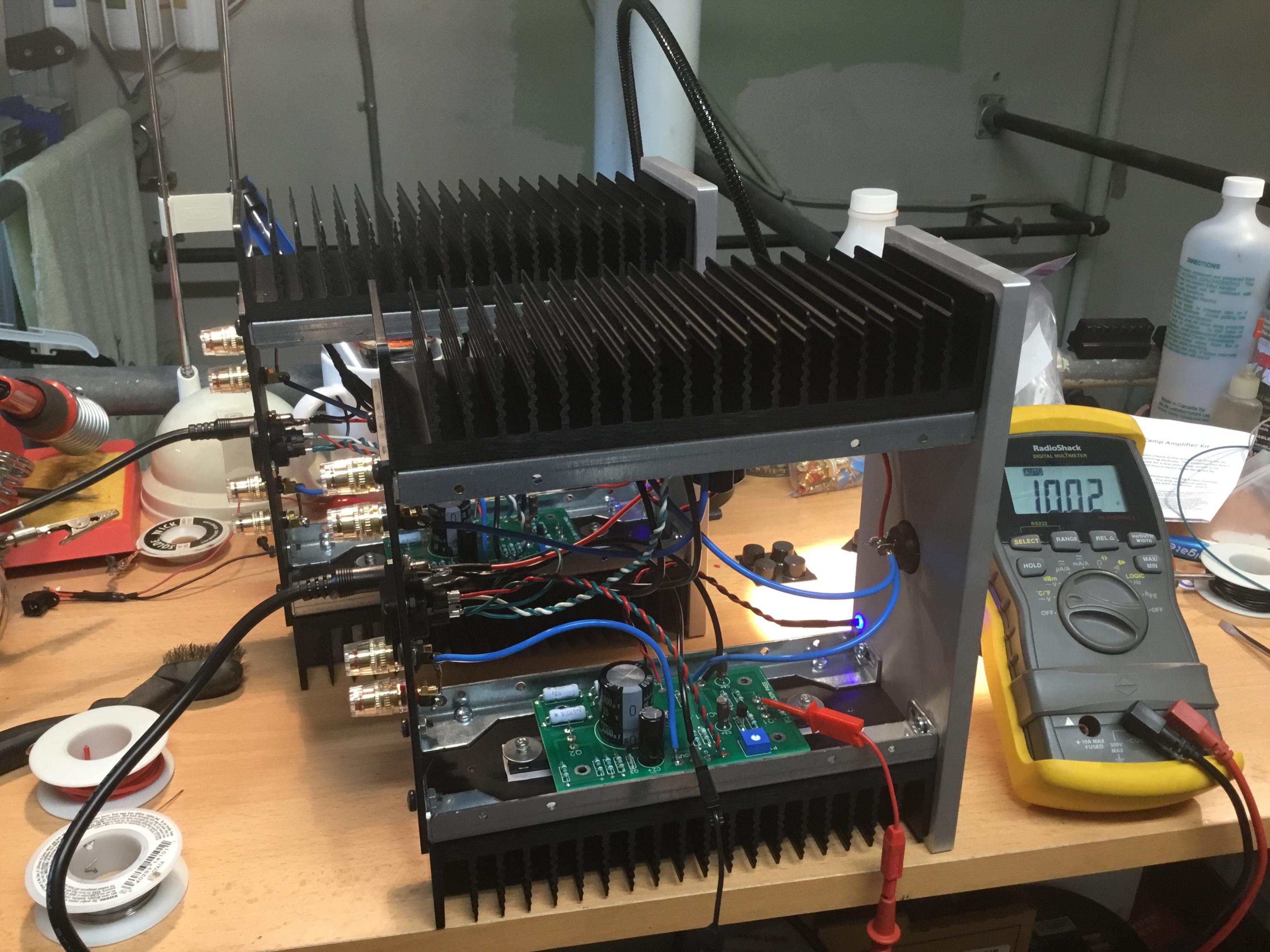
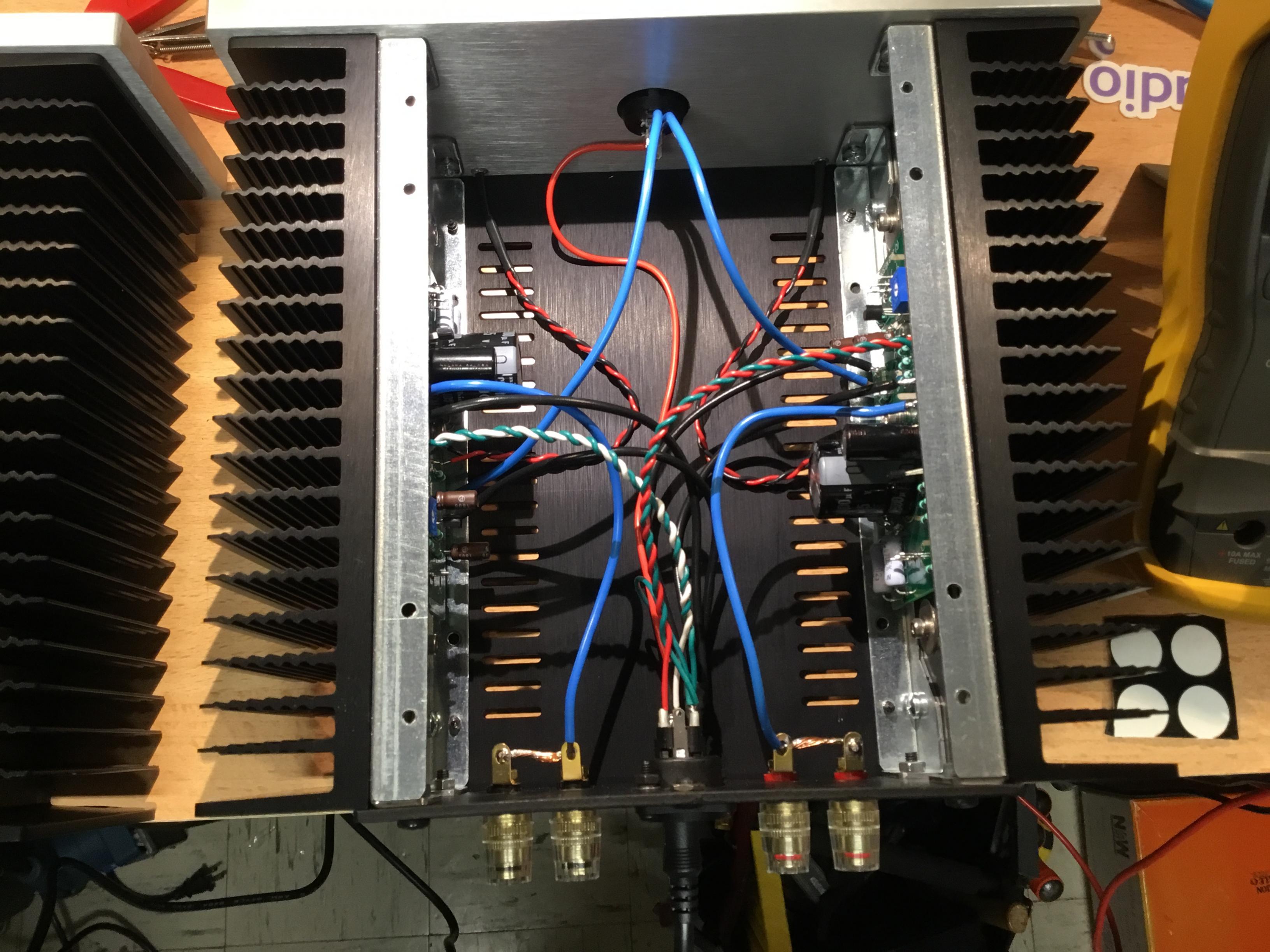
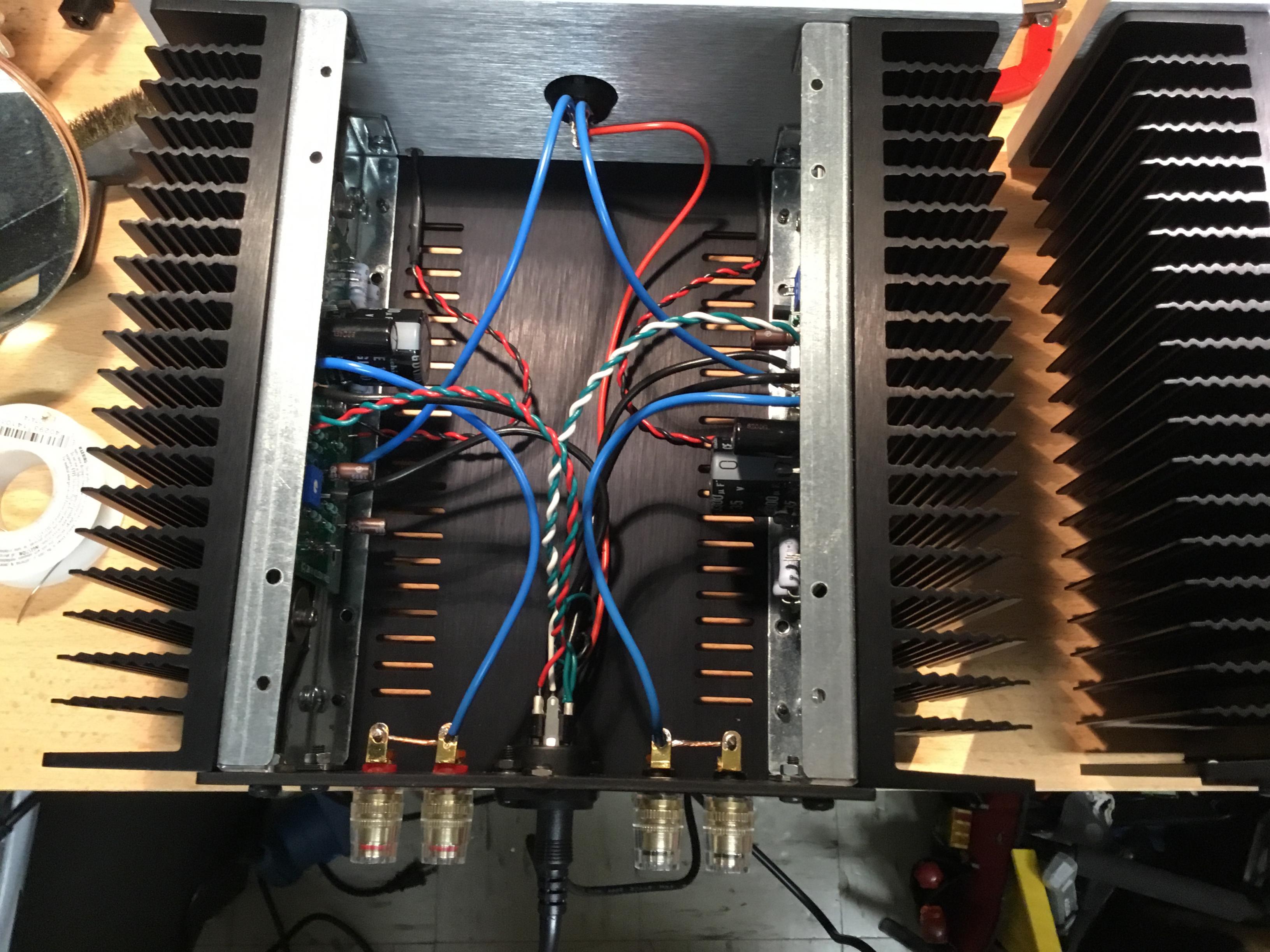
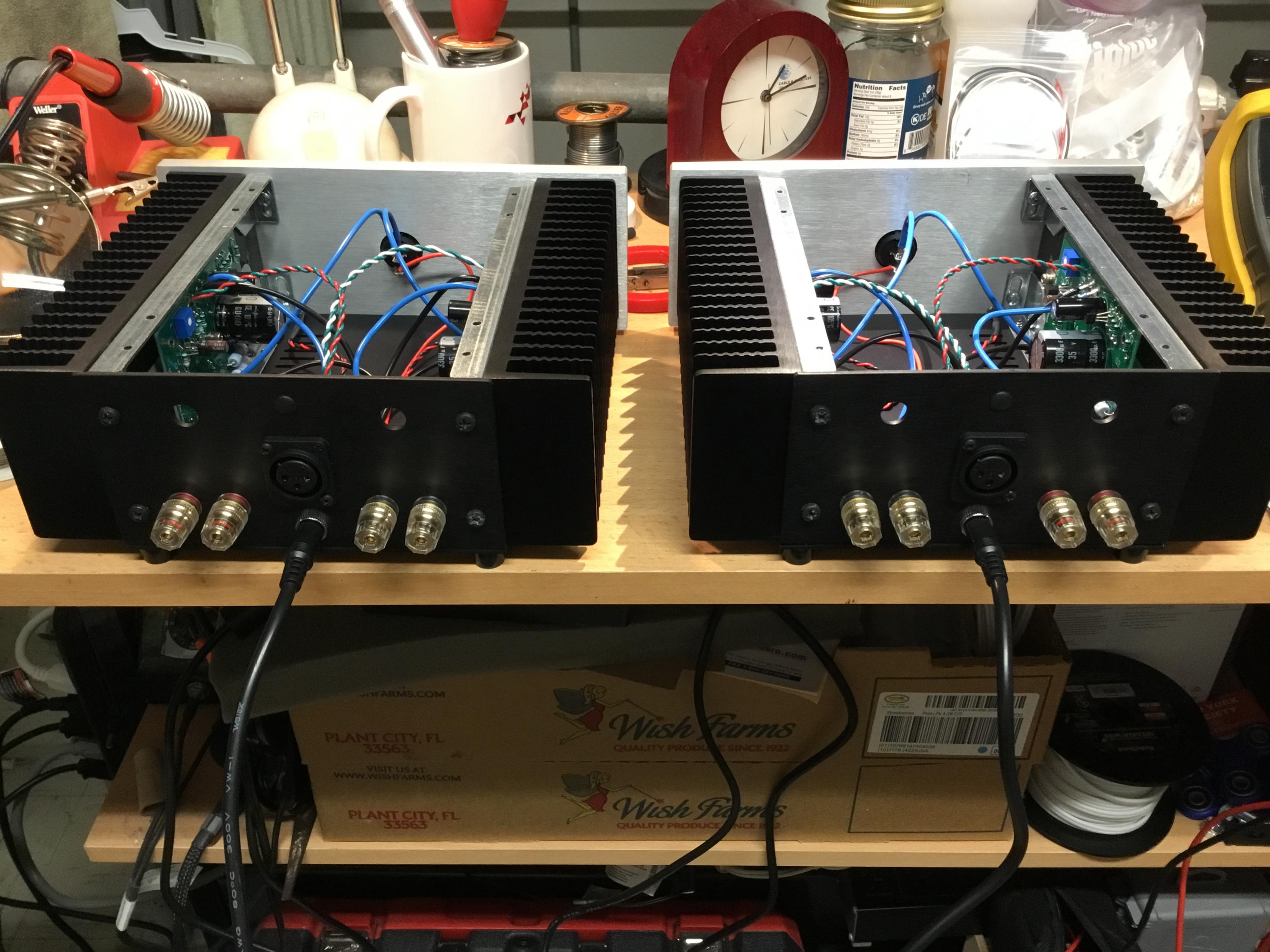
No such thing as a dumb question.
I am fortunate to have in my bag of tricks a Simpson analog volt ohmmeter, behringer ultra curve equalizer and audio analyzer and the mating mike. It can display sound pressure in db.
The manufacturer of my speakers say if I put 2 volts into them and go 3 meters away and measure the pressure. It will be about 92 db. They are pretty spot on with that prediction. I use pink noise and I see 91-92 db with that voltage measured at the input with my trusty old simpson meter.
2 volts squared / 4 ohms = 1 watt.
1 watt is obnoxiously loud. Or, at least in my listening room it is. It won't light up an ice skating rink, but in my living room it is extremely loud.
On my microphone mentioned earlier, with music played at a reasonable level I see an average of 50 to 70 db and an occasional peak of 85 or 90 db. That is all way below the resolution of the Simpson 260 meter.
I became fascinated with the subject back in 1977 when I bought a Pioneer SX-1280. It produced 185 watts RMS into 4 ohms. And I noticed that most of the time it never even approached a watt but was plenty loud enough.
Hope this helps!
I am fortunate to have in my bag of tricks a Simpson analog volt ohmmeter, behringer ultra curve equalizer and audio analyzer and the mating mike. It can display sound pressure in db.
The manufacturer of my speakers say if I put 2 volts into them and go 3 meters away and measure the pressure. It will be about 92 db. They are pretty spot on with that prediction. I use pink noise and I see 91-92 db with that voltage measured at the input with my trusty old simpson meter.
2 volts squared / 4 ohms = 1 watt.
1 watt is obnoxiously loud. Or, at least in my listening room it is. It won't light up an ice skating rink, but in my living room it is extremely loud.
On my microphone mentioned earlier, with music played at a reasonable level I see an average of 50 to 70 db and an occasional peak of 85 or 90 db. That is all way below the resolution of the Simpson 260 meter.
I became fascinated with the subject back in 1977 when I bought a Pioneer SX-1280. It produced 185 watts RMS into 4 ohms. And I noticed that most of the time it never even approached a watt but was plenty loud enough.
Hope this helps!
"We approach a watt sometimes but mostly average .2 watts and an occasional peak up around a watt. Beautiful sounding amp!"
Dumb question - but that's how I learn. How do you safely measure an amplifiers output?
Is it just a case of sticking a multimeter on the speaker terminals whilst playing music or do you use a dummy load?
What can you measure and how with a multimeter? Have educational USB type ocilloscope too but only rated for 5volts
Attachments
[*]What happens if I run ACA on a lower BIAS, like 9V, would this only limit the Dynamic range of ACA, but not the amplification, right? And I guess this probably wouldn't be recommended without changing the Meanwell (or tweaking components)?
[/LIST]
Early on I noticed I wasn't consistently getting the same THD numbers as Nelson, I was just adjusting the bias by looking at sine waves on the oscilloscope. Once I started using a DVM to adjust the bias, the numbers were more consistent and much closer to Nelson's numbers. I think I even posted graphs showing how THD changes when you change the bias. Bottom line, adjust the bias to 12V and you'll probably hear the difference.
setting the bias to 1/2 the B+ or say 12v on a 24vdc psu gives you a maximum output swing, setting the bias current a bit higher, gives you lower distortions...
setting the bias to 1/2 the B+ or say 12v on a 24vdc psu gives you a maximum output swing, setting the bias current a bit higher, gives you lower distortions...
sorry.... do you mean setting the bias a bit higher (for lowest distortions) by means of measuring the voltage at "mid" point, or setting the actual voltage drop across the 3W resistors to be slightly higher?
No such thing as a dumb question.
I am fortunate to have in my bag of tricks a Simpson analog volt ohmmeter, behringer ultra curve equalizer and audio analyzer and the mating mike. It can display sound pressure in db.
The manufacturer of my speakers say if I put 2 volts into them and go 3 meters away and measure the pressure. It will be about 92 db. They are pretty spot on with that prediction. I use pink noise and I see 91-92 db with that voltage measured at the input with my trusty old simpson meter.
2 volts squared / 4 ohms = 1 watt.
1 watt is obnoxiously loud. Or, at least in my listening room it is. It won't light up an ice skating rink, but in my living room it is extremely loud.
On my microphone mentioned earlier, with music played at a reasonable level I see an average of 50 to 70 db and an occasional peak of 85 or 90 db. That is all way below the resolution of the Simpson 260 meter.
I became fascinated with the subject back in 1977 when I bought a Pioneer SX-1280. It produced 185 watts RMS into 4 ohms. And I noticed that most of the time it never even approached a watt but was plenty loud enough.
Hope this helps!
That's cool I'm wondering just how many watts I'm using with 105db per watt speakers - must be an online calc somewhere that will work it backwards.
sorry.... do you mean setting the bias a bit higher (for lowest distortions) by means of measuring the voltage at "mid" point, or setting the actual voltage drop across the 3W resistors to be slightly higher?
setting the voltage at midpoint of the 3watt resistors to read 12 volts, this somewhat tricky, there is a lag, so you have to tweak the pot to get that...
i think that the latest revision did set the bias a bit higher...
bias current by increasing the CCS current a little higher...
this amp drew 44 watts when the sinks are warmed up and bias had stabilized, and temp rise is about 20*C, on an ambient of about 28 to 30 degrees C...
If you are in the same room with them. Probably tenths of a watt.
Here is a reverse calculator:
Power Calculator
And Here is a table someone created with some reference points:
2: Decibel -Loudness Comparison Chart [46] | Download Scientific Diagram
Here is a reverse calculator:
Power Calculator
And Here is a table someone created with some reference points:
2: Decibel -Loudness Comparison Chart [46] | Download Scientific Diagram
That's cool I'm wondering just how many watts I'm using with 105db per watt speakers - must be an online calc somewhere that will work it backwards.
Guys, have you seen this review/measurements thread?
I know the amp sounds good, but that tested unit seems almost broken?
Or what am I missing?
(Havent read the whole thread)
Pass ACA Class A Power Amplifier Review | Audio Science Review (ASR) Forum
I know the amp sounds good, but that tested unit seems almost broken?
Or what am I missing?
(Havent read the whole thread)
Pass ACA Class A Power Amplifier Review | Audio Science Review (ASR) Forum
Guys, have you seen this review/measurements thread?
I know the amp sounds good, but that tested unit seems almost broken?
Or what am I missing?
(Havent read the whole thread)
Pass ACA Class A Power Amplifier Review | Audio Science Review (ASR) Forum
if you haven't already read any First Watt amp's owner manual/NP's description... you definitely should *first* 😉
How can an amp that sounds so good, measure so bad?
An old old question.
Because "sounds so good" is so subjective.
I know all that, but this is almost "beyond bad"..
Good measurements sounds good
Bad measurements sounds good
Funny that 🙂
Good measurements sounds good
Bad measurements sounds good
Funny that 🙂
How can an amp that sounds so good, measure so bad?
An old old question.
Earl Geddes said that the ear isn't all that good at hearing harmonic distortion - at least at the levels that were achieved in electronic equipment since the 1960's. The distortion wars of the 1970's receivers were essentially meaningless.
He did say, though, that we are very sensitive to crossover distortion. Since the amp camp amp is single ended there is no crossover distortion.
Guys, have you seen this review/measurements thread?
I know the amp sounds good, but that tested unit seems almost broken?
Or what am I missing?
(Havent read the whole thread)
Pass ACA Class A Power Amplifier Review | Audio Science Review (ASR) Forum
Go to post 7992 and read forward. On the very sensitive speakers I have one ACA sounded very very good and a pair are just magic. When it comes to Audio hearing is believing seeing is not.
Please, I need a recommendation.
I´m using a Fostex / Massdrop TR-X00 with my ACA.
Impedance: 25 ohms
Sensitivity: 94 dB / mW
Maximum input: 1,800 mW
Frequency response: 5–45,000 Hz
.With them I can listen to a slight HUM through the right channel when I connect my preamp (for example I am using a Mark Johnson T2 among other preamps ones).
.With nothing connected to the input, the amplifier is completely silent.
.With headphones type HD800 I am not able to perceive that HUM and this duo make me enjoy it a lot.
Do you recommend something? Maybe I'm being too picky 😱😱😱
I´m using a Fostex / Massdrop TR-X00 with my ACA.
Impedance: 25 ohms
Sensitivity: 94 dB / mW
Maximum input: 1,800 mW
Frequency response: 5–45,000 Hz
.With them I can listen to a slight HUM through the right channel when I connect my preamp (for example I am using a Mark Johnson T2 among other preamps ones).
.With nothing connected to the input, the amplifier is completely silent.
.With headphones type HD800 I am not able to perceive that HUM and this duo make me enjoy it a lot.
Do you recommend something? Maybe I'm being too picky 😱😱😱
Last edited:
- Home
- Amplifiers
- Pass Labs
- Amp Camp Amp - ACA
